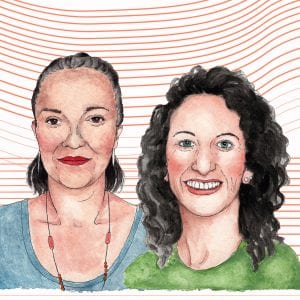In conversation
 Friends and colleagues Adenia Linker and Tonya Howell reflect on how the COVID-19 pandemic has affected their work with students and teachers as social-emotional learning educators in Chicago Public Schools.
Friends and colleagues Adenia Linker and Tonya Howell reflect on how the COVID-19 pandemic has affected their work with students and teachers as social-emotional learning educators in Chicago Public Schools.
Transcript
Tonya: Adenia, what would you say has been the biggest shift in our work together since the beginning of this crazy pandemic?
Adenia: The fact that we cannot be in the same room with the people that we’re trying to support, which is a huge part of the kind of relationships that we nurture through our work. Social and emotional learning done in virtual spaces is different. I think that’s been perhaps one of the biggest challenges of finding ways to foster the same relationships that we worked towards in person under these circumstances.
Tonya: How do we really know what people need if we can’t see them and feel their energy and have those regular interactions that give us clues that don’t always come up in a conversation like this? That’s been really challenging for us to be creative in that way.
But I’ve just found ways to enjoy the benefits of this new situation. I have a job that pays my bills that I get to do from home. I still get to have an impact. My kids are right next to me learning so I get to listen in, make sure they’re paying attention in class. So that’s kind of how I keep my mind in a positive place. It’s not even like, ‘Oh there’s a light at the end of the tunnel.’ It’s like, you look around, there’s just light.
Adenia: One of the silver linings of this situation is that when we say we need to talk about how you would address trauma in your space, we have a much more tuned-in ear from our audience because at whatever level they’ve been personally impacted or their classroom has been impacted or their community — be it economically or social justice or health — everyone now kind of gets that that’s a part of the current scene. We didn’t have those kinds of conversations before COVID. Now, everybody recognizes that this is a priority for our larger community.
Tonya: We do have an opportunity to really set an example. This is what happens in a large urban district. We’re serving 85% Black and Brown students in a city that’s not 85% Black and brown. So when we’re talking about social justice, it’s really not a choice — especially right now. It’s not a choice for teachers.
We get to do the work of responding to what’s happening in the city, in our country, with young people. We get to problem solve about it and actually make real change. I love it.





